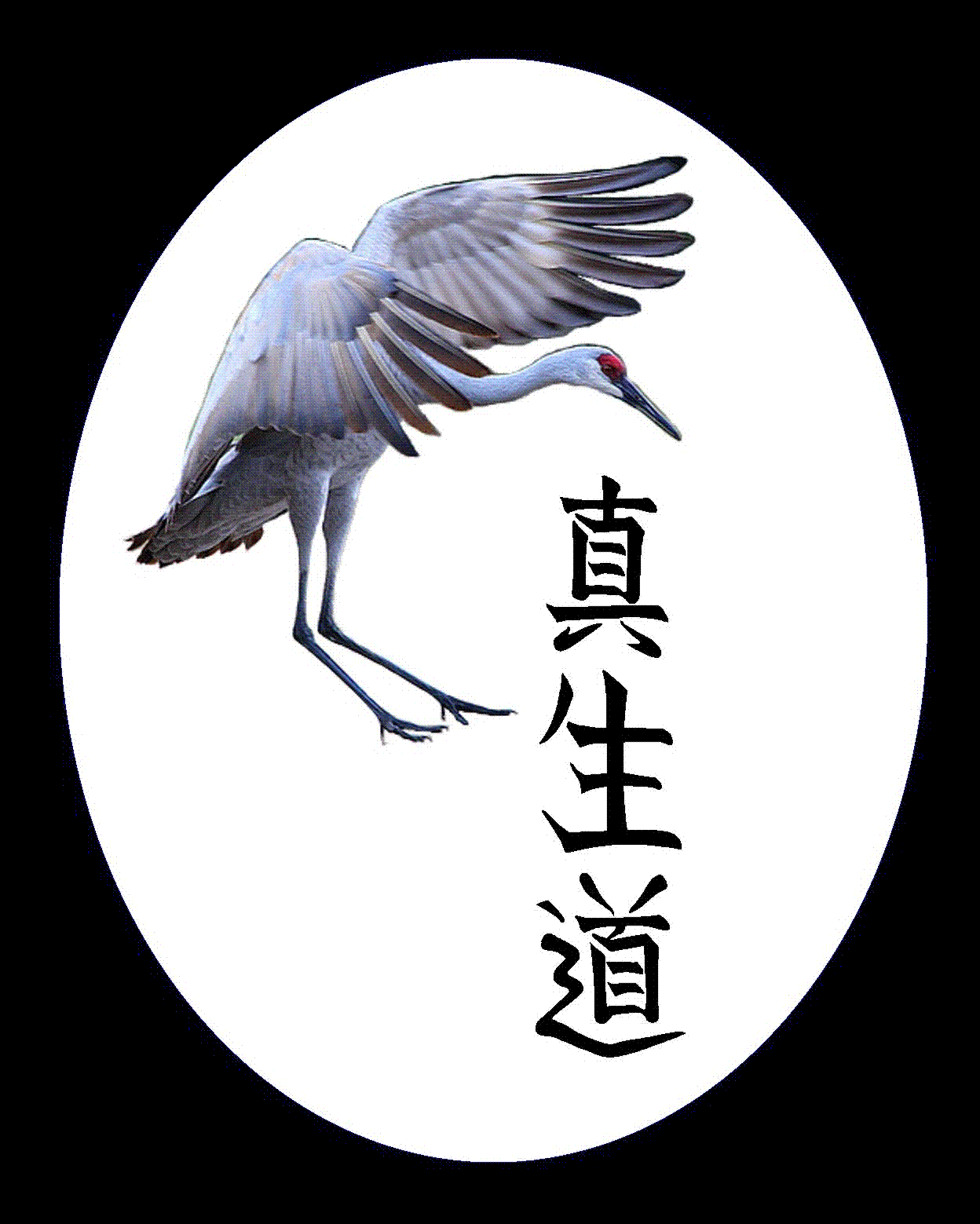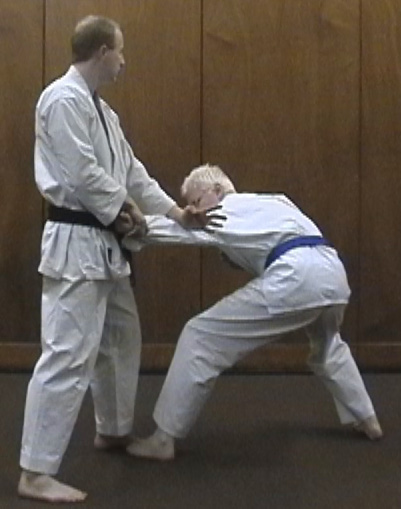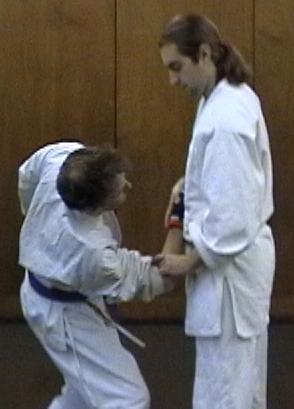
![]()
![]()

Headingley Karate
|
|
|
Trained in Karate before?
Revolutionise your understanding of Karate
Karate, as practiced in the past, was a sophisticated and highly effective self-defence art. Today a schism exists between 'the three K's of Karate', that is Kihon (basics), Kata and Kumite (sparring, or more accurately, partner work). Kihon, Kata and Kumite are essentially three separate disciplines, without a clear link between them. This is a result of the way that Karate has developed over the course of the 20th century. In our view, this is not how it should be!We can help you to reintegrate the 3 K's of Karate, so that they work together towards one common goal - effective life-long self-defence skills.
Read on for more detail on how this is achieved...
Learn the full range of Karate techniques
Most people, Karate students & teachers included, think that Karate is all about punching, blocking and kicking. You might even get the odd takedown too (but this is usually only so you can punch your opponent on the ground).
In the past however Karate also included many other techniques, such as throws/takedowns, joint-locks and chokes. About a hundred years ago these grappling and close quarter combat skills were largely phased out of Karate. Instead the focus shifted to long range striking techniques (ironically many of these were not even part of old style Karate).
Nowadays there are a number of Karate instructors who have incorporated some grappling techniques in their training. Often these are lifted directly from the modern arts of Judo and Aikido. This isn't a bad place to start. But in itself taking this approach just means you have a large collection of techniques that were designed for different purposes and don't always relate terribly well to each other.

'Downward Sweep' used as an armlock to drive the opponent to the ground
|
For best effect the various grappling and striking skills need to be fully integrated, bound together by a common set of underlying principles. This is the approach taken in Shinseido. Students begin with striking and the basics of grappling, over time learning how to integrate joint-locks, throws and chokes into their techniques. This enables Shinseido students to flow freely between the different types of technique in order to fully control an attacker.
Kata
Kata is the soul of Karate. So said Gichin Funakoshi, the founder of Shotokan Karate. The other notable Karate teachers of his day (and earlier) made similar statements, all stressing the importance of kata practice. But today kata is a chore for most Karate students, simply something they have to do to get the next grade. For others it has become a performance art, something they can 'perfect' in order to compete against other 'Karate artists'.
The purpose of kata has been lost, leaving only its outer shell.
In Shinseido, kata is the cornerstone of our practice. That is not to say that students spend many hours in the dojo performing solo kata to get them to 'look good'. Kata are learnt so that students can practice their underlying principles with both body and mind. These principles are then brought alive by practising their applications (Bunkai - see below) with a partner.
In the Leeds Shinseido Dojo the first several kata taught are modern. From brown belt onwards students begin the study of the classical kata of Okinawan Shorin Ryu. As far as we are aware, ours is the only dojo in the north of England to teach authentic classical Shorin Ryu kata.
Read more on the kata practiced in Shinseido.
Bunkai
Bunkai is simply the hands-on application of the prinicples taught in the kata. Without it the lessons of the kata could not be properly learnt and kata would become a pointless exercise.
Over the past 20 years or so, there has been a resurgence of interest in kata bunkai. But there were vanishingly few Karate instructors who genuinely knew anything about the subject. As a result, a number of self-proclaimed experts have appeared and much nonsense has been taught. Some of the more outlandish bunkai taught has involved such things as 'delayed death touches' and 'no touch knock-outs'. Sadly such bunkai has proven of no value in self-defence, but it has been highly effective in parting the unsuspecting - if slightly gullible - Karate public from their money, by way of seminars, DVD's etc.
In Shinseido common-sense is the watchword when it comes to interpreting kata. The Leeds instructor, Mike Flanagan, has spent over 20 years studying the Karate kata and their bunkai. Mike has studied under several internationally acclaimed experts in the field and augmented this with much personal study. Mike teaches the kata and bunkai hand in hand, using the principles of the kata to deal with realistic - rather than ritualised - attacks.
If you have any questions about bunkai please check out our Bunkai page, and feel free to send us any questions regarding bunkai. Mike will attempt to answer these in as timely a manner as possible.

Students practising finding a kyusho point on the arm
|
Kyusho-Jutsu: Attacking the vital points
In the past Karate training included a thorough knowledge of how to attack the vulnerable points of the human body. The same can be said for other oriental martial arts: pick up just about any pre - World War II martial art book and you'll find a chart showing a selection of 'vital points'. What they don't show though is how to go about attacking these points.
With the modernisation of Karate in the 20th century this knowledge was reduced to a mere 3 target areas: gedan (low), chudan (middle) and jodan (high).
Attacking vital points is not just a matter of learning the locations and attempting to hit them with long range Karate strikes, this approach simply won't work. In order to be effective, it has to be taught as an integral part of Karate training. Shinseido students are taught how to attack vital points from day one. Initially this involves attacking a few points that are easy to find in a grappling situation. As students progress they are introduced to different target areas and the varied ways of attacking them.
Click here to learn more about Kyusho-Jutsu.
Be part of a living tradition
Shinseido is firmly rooted in the old style Karate practices of the 19th century. The cornerstone of our practice is the study of kata. After the first few introductory exercises the kata used are authentic versions of the classical Shorin Ryu kata, from the Matsumura tradition. But Shinseido is not stuck in the past. Much of the instruction is strongly influenced by the personal experiences of the senior Shinseido instructors.
Nor are we afraid to draw on other martial traditions where appropriate. The karate-ka of the 19th century were pragmatists and drew freely on the instruction of whatever competent teachers were available to them - so that their art was best able to address their particular needs. We are simply carrying on in that tradition, so that each (long term) student can gear the art towards their own needs.
Find new direction
Many karate students retire, either through injury or simply because they feel too old to compete with the fitness, agility and speed of the young. But there is another way. The practice methods outlined above enable students to continue to learn and progress, regardless of age and health. You may not be able to compete to the standard you once could, but there is nothing to stop you improving and developing your self-defence skills well into old age.
Karate should be a life-long study. The opportunities to test your self-defence skills should hopefully be few and far between. But the opportunity to fight off the enemies of poor health and infirmity is there every day.
Join us today (well, check us out by having a FREE lesson) to see if our approach to Karate is for you.